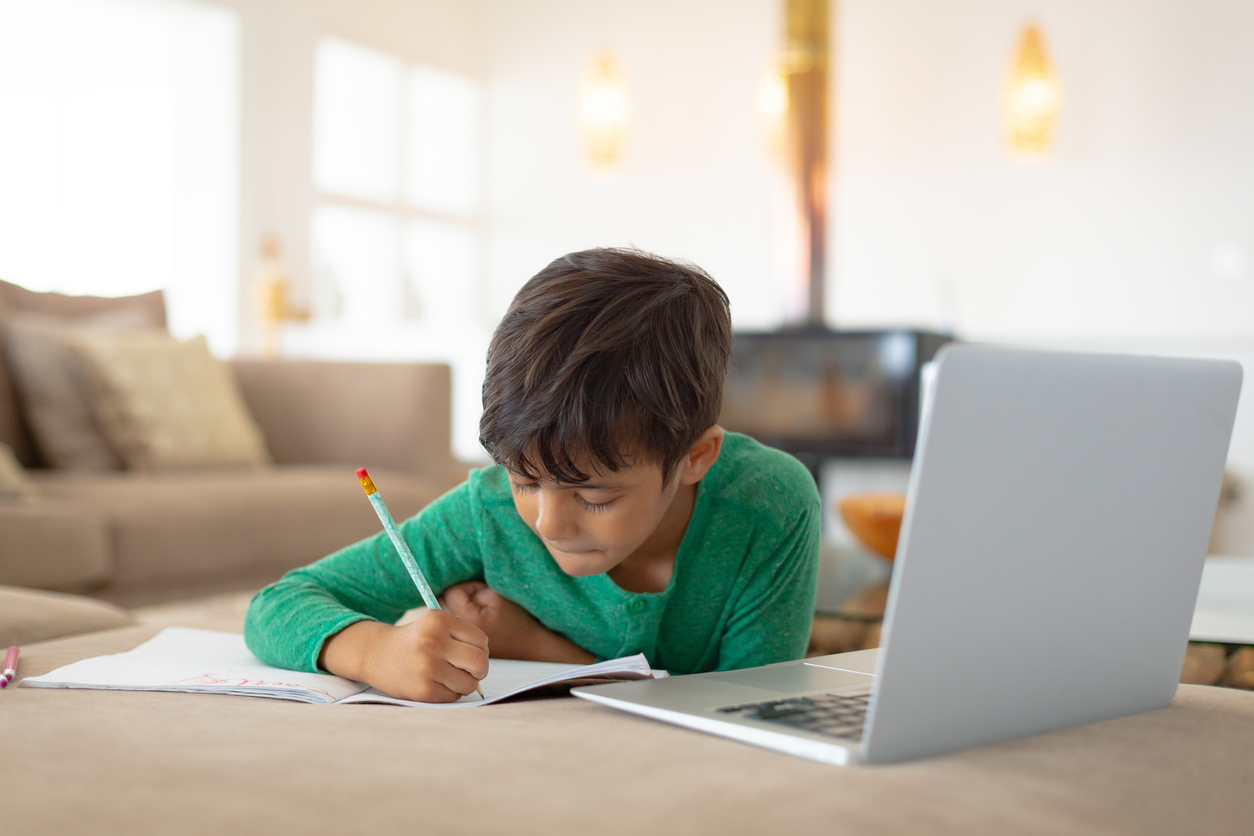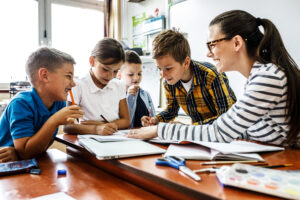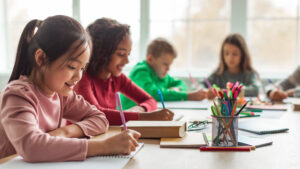As school districts release their health and safety plans for school this Fall, parents scramble to decide what learning environment is the best option for their child
Every school district is unique in its number of students, classroom sizes, technology budget, transportation needs, etc. As such, districts are outlining plans for the reopening of schools and what is best for their district’s specific qualities.
The three most common options are:
- Full-time traditional school days
- 100% virtual education
- A hybrid model of both on-site and remote learning
Many schools are offering several options to families, so they can choose which is best for their child. Others, because of different circumstances, are only able to accommodate one of these approaches at this time. However, all schools must be prepared for students to return to remote learning if a surge in pandemic numbers, like what we saw this past spring.
Making the decision to send your child back to a classroom can be difficult, but some parents feel it’s the best option for their child
Many parents and students cannot wait to get back into the classroom. There are many reasons families need this style of learning environment. Arguably, children with learning differences appear to be in need the most of in-person instruction and routines. There are currently over 7 million students in public schools who rely on special education resources.
Other reasons some parents are in favor of getting their kids back into the classroom are because both parents are working (even if they’re working from home, becoming a catalyst for your child’s remote learning can be its own full-time job). There’s also your child’s social and emotional needs many parents are concerned about. Kids need friends and learning how to socialize is an important life skill.
What are classrooms going to look like?
If your school district is allowing any kind of on-site learning, there are certain changes your student should expect to see:
- Face coverings
- Temperature checks
- Social distancing
- Possible short/long term switch to remote learning
For starters, face coverings or masks are going to be a requirement to some degree. Many schools are maintaining a 100% face covering policy, except for lunchtime.
While other schools believe they will be able to uphold a social distancing requirement of at least 6 feet apart during certain times so that students may take breaks from wearing their masks or face shields.
Another change for students this year will most likely be mandatory temperature checks before entering the classroom. Many schools have hired additional medical staff to aid in screening all students before school starts. Any student presenting with a temperature over a certain degree will be sent home.
Social distancing seems to be a term everyone is familiar with these days, even though it’s a relatively new concept for most. It’s basically staying at least 6 feet apart from any person who does not reside in your home. This distance is thought to be far enough away so that droplets from a cough or a sneeze will not reach you coming from another person. Kids who are not already familiar with this practice will quickly become so if going back to school.
To uphold this law of social distancing, many schools will create one-way hallways, have markings on the floor to indicate where students should stand in line, and re-configure classrooms to push desks as far apart as possible.
While your student may be excited to return to school this fall, be sure to prepare them for the possibility of returning to virtual learning if COVID-19 numbers rise. This could be because the county, state, or country declares it to be too dangerous for school gatherings again.
Short-term virtual learning could also be the case if your student comes in contact with another student who has tested positive for COVID-19 or becomes sick themselves. There are different regulations for how long a student is expected to self-quarantine. Sometimes it’s 14 days, and sometimes it’s until the student is symptom-free for 72 hours.
With any of these scenarios, most schools appear to be providing a process for students to quickly switch to remote learning so they don’t fall further behind.
Now that we’ve discussed going back to a classroom, what about virtual learning?
There are many school districts that believe the safest course of action for their staff and students is to continue with 100% virtual learning, for at least the first part of the school year. Some experts believe there will be a rise in COVID-19 cases this fall, justifying the continued closure of schools. For these students, the beginning of their new school year will certainly look different.
When all schools shut down this past spring, most adopted a pass/fail grading system or a system in which student’s grades could not worsen since switching to remote schooling.
This is most likely not going to be the case in the fall. Now that many of the kinks have been worked out, and school districts and administrators have had time to gather resources and lesson plans that support homeschooling, the grading system is expected to return to a more traditional feature.
Some school districts are setting up centers where kids who do not have internet access can gather to complete their virtual learning. At these centers, it is made clear that there will be a proctor who can help your child with technical difficulties but will not be a teacher for your child. There is even some discussion about using schools for this purpose.
Besides going back to school full time or continuing remote learning, some school districts are also offering a hybrid model
One of the biggest advantages for school districts to make use of a mixture of on-site and virtual learning is that it gives them extra time to sanitize. With the full-time traditional school day, the staff is being asked to stay after school hours to sanitize and clean classrooms daily. If you mix in remote learning times, there will be days when students are not present in the school, and the building can be sanitized more thoroughly every week.
Many of the hybrid models consist of A/B schedules where some students or classes are in school two days, the other half attends a different two days. In this situation, there is one day where no students are present, all “off” days students are expected to partake in remote learning. Other examples are week on/week off schedules or morning and afternoon classes.
Whichever model your school district currently plans on using or offering, it’s important that students understand everything can change. Flexibility can be especially difficult for students with certain learning differences who perform best with routines and regularity.
In these uncertain times, students with learning differences can use all the help they can get
The Learning Lab is a resource for families of students who are struggling in school. We specialize in students with ADHD, dyslexia, and who need support with executive functioning. We are also certified to help with a multitude of delays and learning differences. We know this school year is going to be different, make sure you’re prepared to get the help your child needs.
Parents who know their child needs in-person instruction, and your school is not offering it this fall, The Learning Lab is here for you. Take our free online analysis to determine if your child could use our services, it’s simple and takes no time at all to fill out. You will then be contacted to begin our placement procedure; this will give us a better picture of what your child’s needs are. Each child is an individual and requires a unique program created just for them, and that’s what The Learning Lab does!





